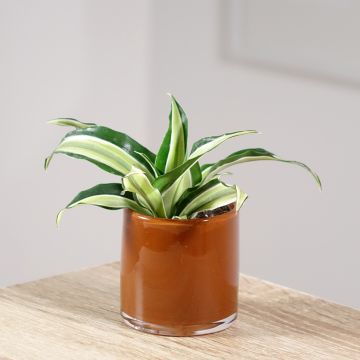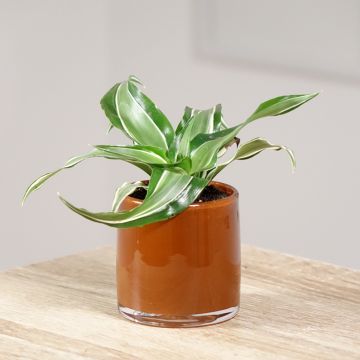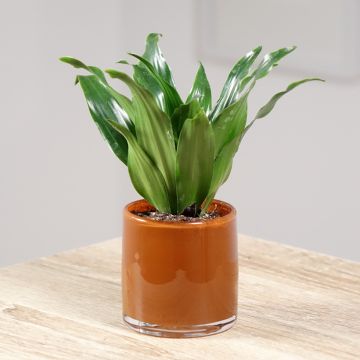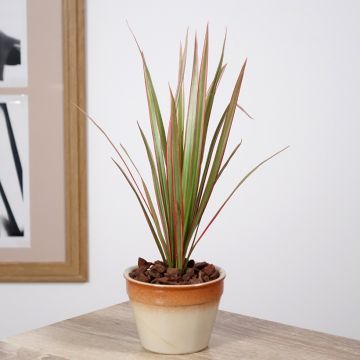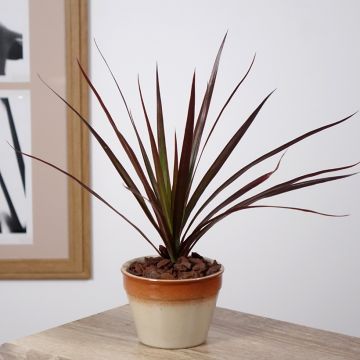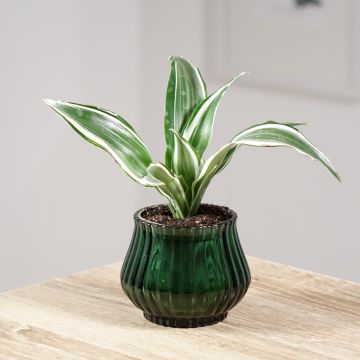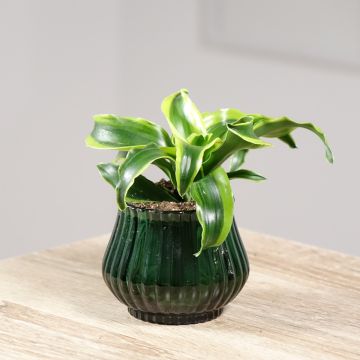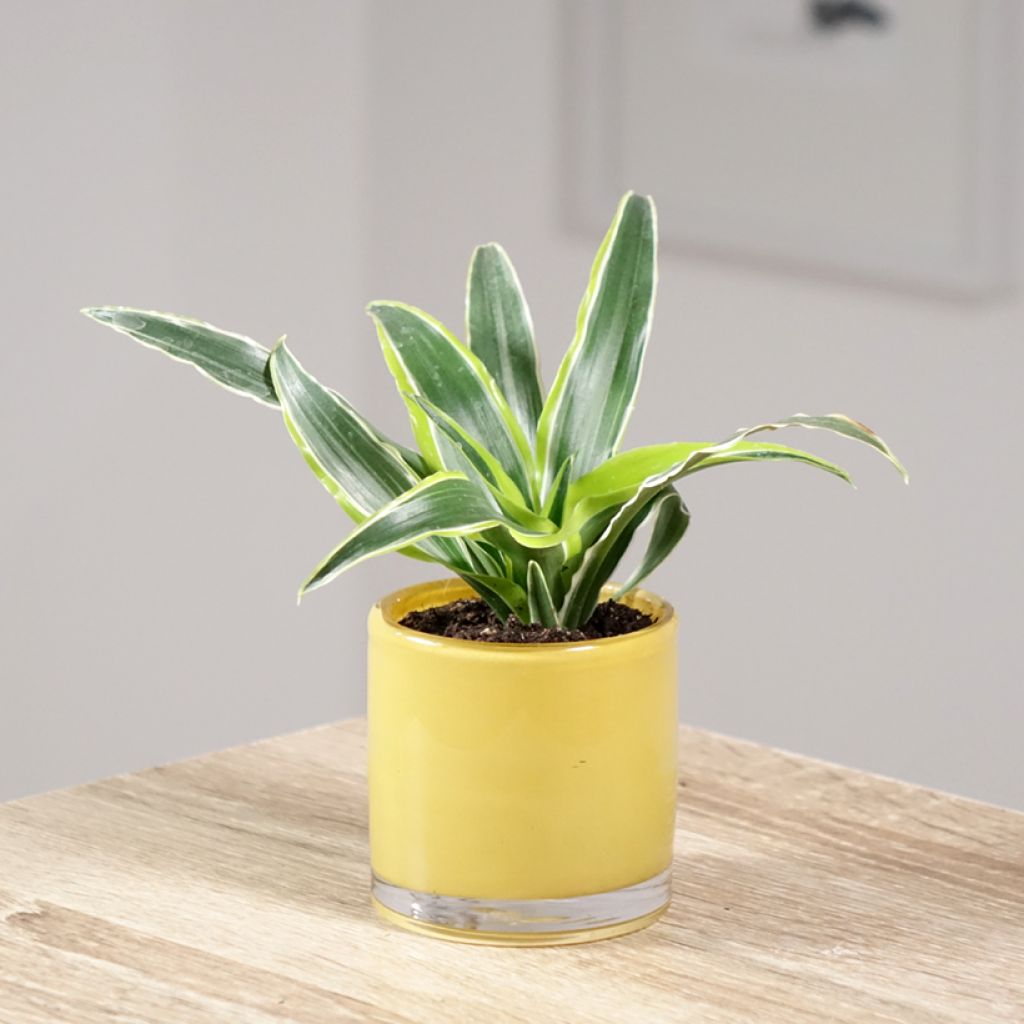

Dracaena fragrans Lemon Surprise - Dragon tree
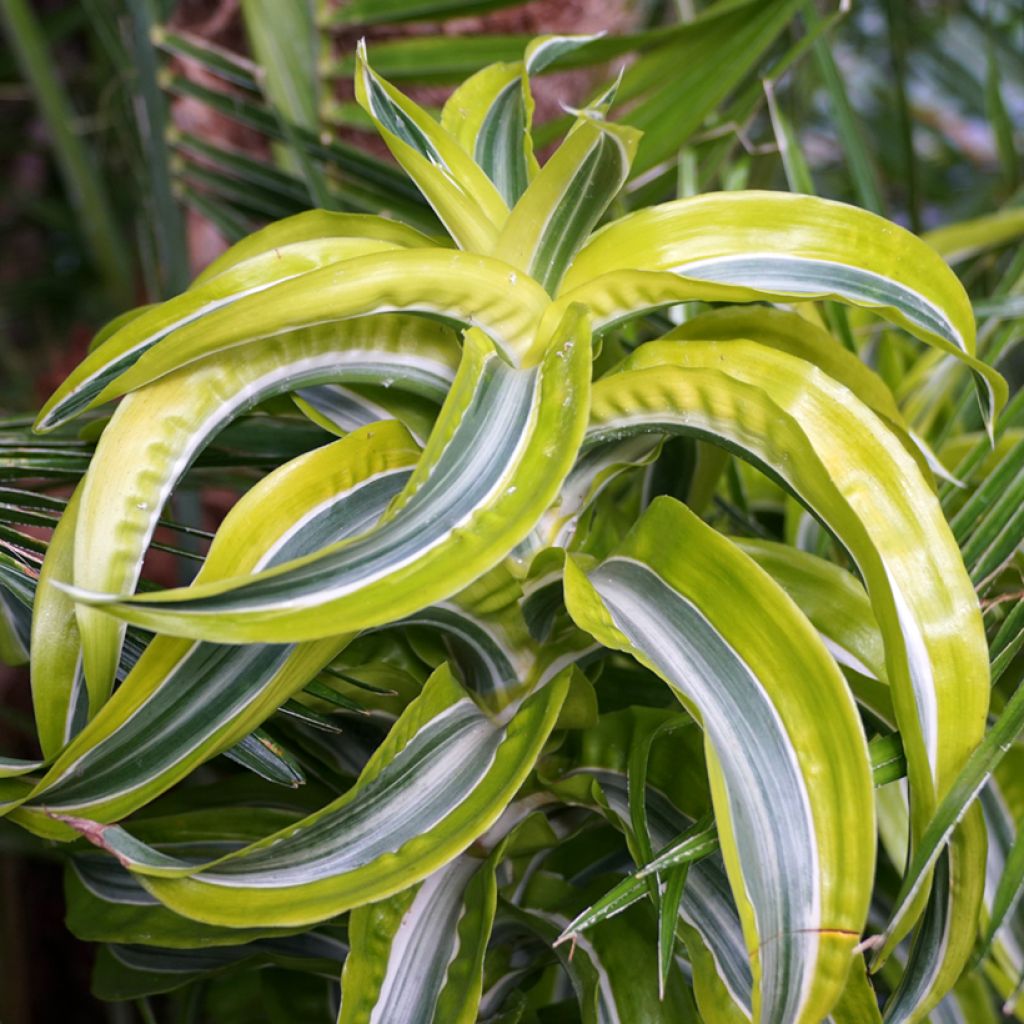

Dracaena fragrans Lemon Surprise - Dragon tree
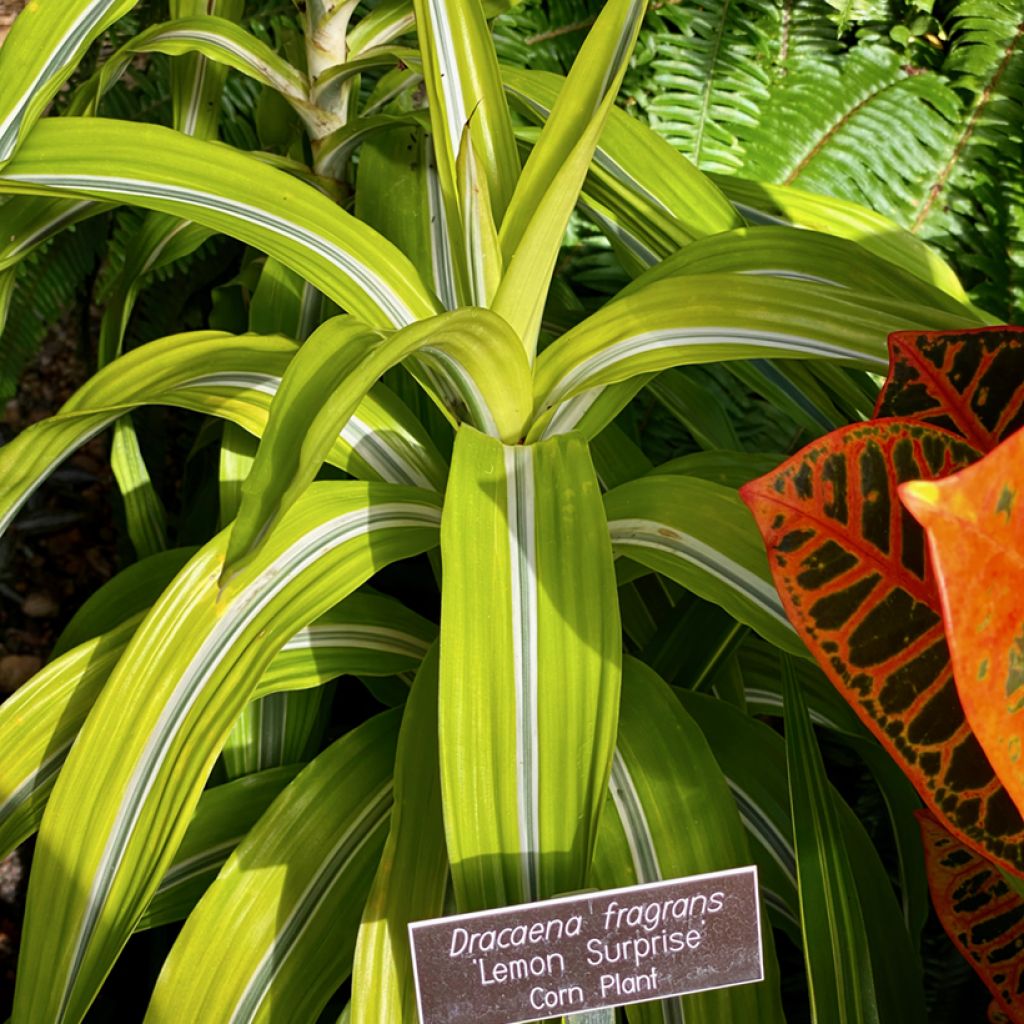

Dracaena fragrans Lemon Surprise - Dragon tree


Dracaena fragrans Lemon Surprise - Dragon tree
Dracaena fragrans Lemon Surprise - Dragon tree
Dracaena fragrans Lemon Surprise
Dragon tree
Special offer!
Receive a €20 voucher for any order over €90 (excluding delivery costs, credit notes, and plastic-free options)!
1- Add your favorite plants to your cart.
2- Once you have reached €90, confirm your order (you can even choose the delivery date!).
3- As soon as your order is shipped, you will receive an email containing your voucher code, valid for 3 months (90 days).
Your voucher is unique and can only be used once, for any order with a minimum value of €20, excluding delivery costs.
Can be combined with other current offers, non-divisible and non-refundable.
Home or relay delivery (depending on size and destination)
Schedule delivery date,
and select date in basket
This plant carries a 30 days recovery warranty
More information
We guarantee the quality of our plants for a full growing cycle, and will replace at our expense any plant that fails to recover under normal climatic and planting conditions.
Description
The Dracaena fragrans 'Lemon Surprise', also known as Dracaena deremensis 'Lemon Surprise', is a variety of Dragon Tree particularly attractive for its colourful foliage. Its long leaves combining dark and lime green are beautifully arched, and the successive layers of vegetation overlap in a highly aesthetic pattern. This bright plant has no equal in lighting up a room and giving it a tropical touch. Very easy to grow, you'll keep it for many years.
The Dracaena now belongs to the Asparagaceae family. There are dozens of Dracaena species, mainly found in Africa and Southeast Asia, but also more marginally in China, Central America, Australia, etc. The Dracaena fragrans species sometimes called Cordyline fragrans is native to tropical Africa where it can be found from sea level up to 1,500 metres' altitude. It thrives in dry lowland forests or mid-elevation montane zones where its dense vegetation covers significant ground. It grows into bushes up to 6 m tall with stems that are generally herbaceous or semi-woody of 2.5 to 10 cm in diameter, and rarely ramified. The leaves are long, lanceote, and tapered, measuring 30 cm to 1 m in length, and the plant produces inflorescences up to 60 cm long. These are formed of small white-yellow flowers of 2 cm in size which open at night, releasing a strong fragrance, and after fertilisation, producing small orange to red fruits of 1.5 to 2 cm in diameter.
The Dragon Tree Lemon Lime exhibits much more moderate growth, making it suitable for our homes as it will reach a maximum height of 2 m with age, but will most often stay around 1.20 m tall and 50 to 60 cm wide. The plant initially forms a small, palm-like clump with slender, gracefully arched leaves. Measuring 20 to 30 cm or more in length, the narrow, lancote leaves have a dark green central part, often bordered with two white lines, while a wide light green margin, ranging from yellow-green to chartreuse, covers the entire edge of the lamina. This colour harmony is particularly bright and pleasing to the eye. As the plant grows, it forms different layers of vegetation and stems develop at varying heights, creating an extremely decorative tiered effect. However, don’t expect it to flower, as this rarely happens indoors. When it does, the flowering consists of small, highly fragrant, cream-white, star-shaped flowers.
The Dracaena fragrans 'Lemon Lime' is the archetypal beginner's plant, adapting to most indoor environments. A temperature range of 18°C to 24°C suits it perfectly, in not over-dry but not necessarily humid ambient air. It tolerates bright light without direct sunlight and can also cope with lower light conditions, though its growth will slow. To create a tropical haven, pair it with other vibrant flowering exotic plants such as the Guzmania, a Bromeliad resembling a small pineapple with a red, pink, or yellow heart depending on the variety. A beautiful Anthurium with striking spathes (the colourful part of the flower) will also make a great companion to enhance the exotic feel in your room.
Report an error about the product description
Dracaena fragrans Lemon Surprise - Dragon tree in pictures


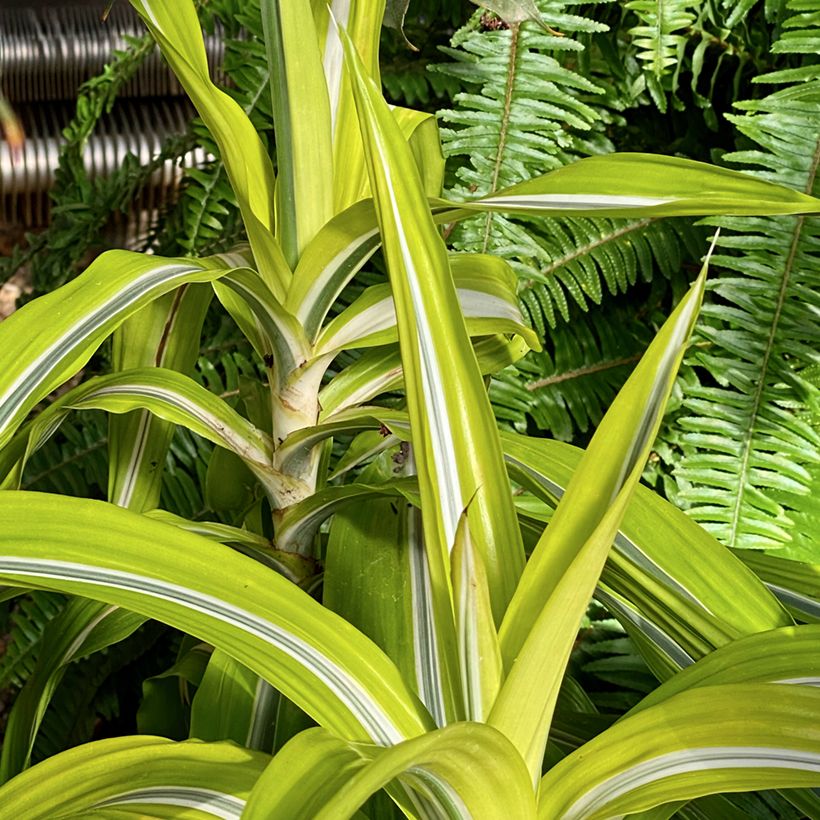

Foliage
Plant habit
Botanical data
Dracaena
fragrans
Lemon Surprise
Asparagaceae
Dragon tree
Cultivar or hybrid
Other Dracaena - Dragon Tree
View all →Location
Location
Maintenance and care
Watering tips
Potting advice, substrates and fertilisers
Houseplant care
Disease and pest advice
Maintenance and care
This item has not been reviewed yet - be the first to leave a review about it.
Haven't found what you were looking for?
Hardiness is the lowest winter temperature a plant can endure without suffering serious damage or even dying. However, hardiness is affected by location (a sheltered area, such as a patio), protection (winter cover) and soil type (hardiness is improved by well-drained soil).

Photo Sharing Terms & Conditions
In order to encourage gardeners to interact and share their experiences, Promesse de fleurs offers various media enabling content to be uploaded onto its Site - in particular via the ‘Photo sharing’ module.
The User agrees to refrain from:
- Posting any content that is illegal, prejudicial, insulting, racist, inciteful to hatred, revisionist, contrary to public decency, that infringes on privacy or on the privacy rights of third parties, in particular the publicity rights of persons and goods, intellectual property rights, or the right to privacy.
- Submitting content on behalf of a third party;
- Impersonate the identity of a third party and/or publish any personal information about a third party;
In general, the User undertakes to refrain from any unethical behaviour.
All Content (in particular text, comments, files, images, photos, videos, creative works, etc.), which may be subject to property or intellectual property rights, image or other private rights, shall remain the property of the User, subject to the limited rights granted by the terms of the licence granted by Promesse de fleurs as stated below. Users are at liberty to publish or not to publish such Content on the Site, notably via the ‘Photo Sharing’ facility, and accept that this Content shall be made public and freely accessible, notably on the Internet.
Users further acknowledge, undertake to have ,and guarantee that they hold all necessary rights and permissions to publish such material on the Site, in particular with regard to the legislation in force pertaining to any privacy, property, intellectual property, image, or contractual rights, or rights of any other nature. By publishing such Content on the Site, Users acknowledge accepting full liability as publishers of the Content within the meaning of the law, and grant Promesse de fleurs, free of charge, an inclusive, worldwide licence for the said Content for the entire duration of its publication, including all reproduction, representation, up/downloading, displaying, performing, transmission, and storage rights.
Users also grant permission for their name to be linked to the Content and accept that this link may not always be made available.
By engaging in posting material, Users consent to their Content becoming automatically accessible on the Internet, in particular on other sites and/or blogs and/or web pages of the Promesse de fleurs site, including in particular social pages and the Promesse de fleurs catalogue.
Users may secure the removal of entrusted content free of charge by issuing a simple request via our contact form.
The flowering period indicated on our website applies to countries and regions located in USDA zone 8 (France, the United Kingdom, Ireland, the Netherlands, etc.)
It will vary according to where you live:
- In zones 9 to 10 (Italy, Spain, Greece, etc.), flowering will occur about 2 to 4 weeks earlier.
- In zones 6 to 7 (Germany, Poland, Slovenia, and lower mountainous regions), flowering will be delayed by 2 to 3 weeks.
- In zone 5 (Central Europe, Scandinavia), blooming will be delayed by 3 to 5 weeks.
In temperate climates, pruning of spring-flowering shrubs (forsythia, spireas, etc.) should be done just after flowering.
Pruning of summer-flowering shrubs (Indian Lilac, Perovskia, etc.) can be done in winter or spring.
In cold regions as well as with frost-sensitive plants, avoid pruning too early when severe frosts may still occur.
The planting period indicated on our website applies to countries and regions located in USDA zone 8 (France, United Kingdom, Ireland, Netherlands).
It will vary according to where you live:
- In Mediterranean zones (Marseille, Madrid, Milan, etc.), autumn and winter are the best planting periods.
- In continental zones (Strasbourg, Munich, Vienna, etc.), delay planting by 2 to 3 weeks in spring and bring it forward by 2 to 4 weeks in autumn.
- In mountainous regions (the Alps, Pyrenees, Carpathians, etc.), it is best to plant in late spring (May-June) or late summer (August-September).
The harvesting period indicated on our website applies to countries and regions in USDA zone 8 (France, England, Ireland, the Netherlands).
In colder areas (Scandinavia, Poland, Austria...) fruit and vegetable harvests are likely to be delayed by 3-4 weeks.
In warmer areas (Italy, Spain, Greece, etc.), harvesting will probably take place earlier, depending on weather conditions.
The sowing periods indicated on our website apply to countries and regions within USDA Zone 8 (France, UK, Ireland, Netherlands).
In colder areas (Scandinavia, Poland, Austria...), delay any outdoor sowing by 3-4 weeks, or sow under glass.
In warmer climes (Italy, Spain, Greece, etc.), bring outdoor sowing forward by a few weeks.






























